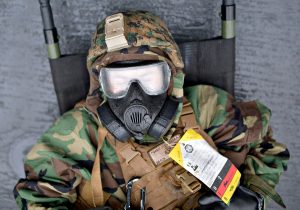By Steven Stashwick

Earlier this week the commander of the U.S. Strategic Command, responsible for the United States’ nuclear arsenal, warned that modernizing its own arsenal was next on China’s “to-do list.”
Admiral Charles Richard highlighted his concerns that there was no margin of error for the United States to modernize its massive nuclear arsenal to respond to China’s moves.
The Pentagon’s annual report on China’s military released in August provided some of the most specific information on China’s nuclear arsenal ever released by the U.S. government. The most respected open-source estimates of China’s arsenal in recent years from the Federation of American Scientists assess that China has a little over 300 nuclear warheads. The Pentagon’s new report puts the number of warheads closer to 200 and expected it to double over the next decade.
By comparison, the United States has close to 4,000 nuclear warheads in its arsenal, with 1,600 deployed strategic weapons atop intercontinental ballistic missiles in silos and ballistic missile submarines, or ready to be dropped by air force bombers.
Despite the United States’ massive advantage in the size and capability of its nuclear arsenal, Richard is worried about China’s new and anticipated capabilities.
“China now has the capability … to directly threaten our homeland from a ballistic missile submarine. That’s a pretty watershed moment,” Richard told reporters. China’s land-based nuclear missiles have been capable of targeting the United States for decades.
But China’s fleet of Type 094 nuclear missile submarines remains small at four, with two more being completed. The range of the missiles on those submarines is also relatively limited. The Pentagon believes that to threaten the continental United States, those submarines would need to travel more than halfway across the Pacific Ocean to the east and north of Hawaii. The island geography around China that those submarines would need to pass through to reach those patrol areas off Hawaii presents a significant challenge to remaining undetected by the U.S. Navy.
China’s next generation of nuclear missile submarines, the Type 096, and an advanced new missile they are expected to carry, will be able to target the United States from just off its own shores, potentially reducing the risk of being tracked.
In earlier remarks to a policy institute closely aligned with the U.S. Air Force, Richard was more specific about his worries that China’s new nuclear capabilities would challenge the United States’ ability to deter what he described as China’s increasing aggression.
“China is on a trajectory to be a strategic peer to us by the end of the decade. So, for the first time ever the U.S. is going to face two peer-capable nuclear competitors [Russia and China] who are different, who you have to deter differently. We have never faced that situation before.”
But even if China’s military approaches greater parity with the United States in coming years, it will remain a drastically different strategic challenge than the United States faces with Russia. China’s People’s Liberation Army has grown and modernized with stunning rapidity in the last 20 years, but even if it doubles, its nuclear arsenal will still be tiny compared to the thousands of warheads maintained by the United States and Russia.
Implied in the Pentagon report and Richard’s concerns is a worry that if China can use its nuclear arsenal to effectively deter the United States’ own nuclear weapons, there may be little to stop the two from fighting a destructive conventional war.
No comments:
Post a Comment